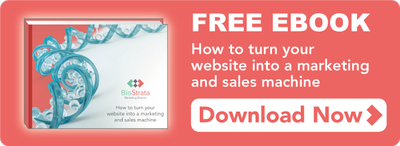A month ago, I injured my back thanks to an over-ambitious New Year health and fitness regime to combat the onset of middle-age spread. Being in chronic pain and unable to sit down at all for 7 days, resulted in me being off work lying flat on my back contemplating how on earth I was ever going to get my body back to normal again.
Balancing my laptop on my tummy I started to research Pilates classes. While doing this I stumbled across a website offering rehabilitative personal training that looked as though it could be perfect for me. I enthusiastically clicked on the ‘Get in touch’ button and was instantly presented with a landing page and form that seemed to scroll down forever. It didn’t simply ask for my name, email address and telephone number. It wanted me to divulge my exercise goals, my eating habits, how I defined my current exercise regime, why I was interested in their classes… It was an endless list of intrusive questions. All I wanted was to find out a little more about the trainer’s qualifications, what the sessions covered and the cost of the packages. Admittedly, I was feeling fairly grouchy anyway, but this really infuriated me and I slammed my laptop shut and returned to feeling sorry for myself.
 Image: Flickr/Ge.Ne/Runway/CC BY 2.0
Image: Flickr/Ge.Ne/Runway/CC BY 2.0
Converting visitors into leads
We are all looking to make our websites work as efficient lead generation vehicles. So, we have done a great job with our SEO strategy and visitors are pouring in. We have developed some truly impactful content that our visitors are looking to download. Now, all we need to do is to ensure we develop the best possible landing page so we can capture their details and convert those visitors into leads. But how can we get the balance right to ensure sign-up? And what should our landing page consist of?
Landing page essentials
- A headline and (optional) sub-headline
- A brief description of the offer/CTA
- At least one supporting image
- (Optional) supporting elements such as testimonials or security badges
- And most importantly, a form to capture information
How to make an effective landing page
Here are our top tips for developing the most powerful landing page.
- Include elements from the previous page – but keep it simple.
- Never use the homepage as a landing page.
- Remove main site navigation from the landing page so visitors are focussed on completing the form and not moving elsewhere.
- Make it clear what the offer is and make it irresistible.
- Make sure the content on your landing page matches your call to action.
- Don’t make visitors think or do too much work.
- Use the right form and only collect the information you absolutely need.
It is really quite simple to avoid the mistake made by the personal training company. If they had provided a little bit more basic content on their website and asked me to complete a short, easy form, I could be getting my back fixed with them right now. Instead, I went to one of their competitors who made it really easy to access all the information I needed without revealing my life story!
You can find out more about developing successful landing pages to drive your sales by downloading our FREE eBook on turning your website into a marketing and sales machine.





